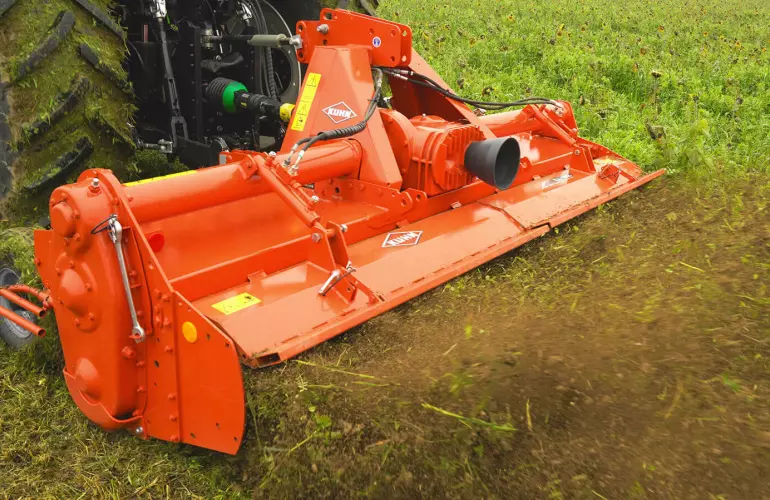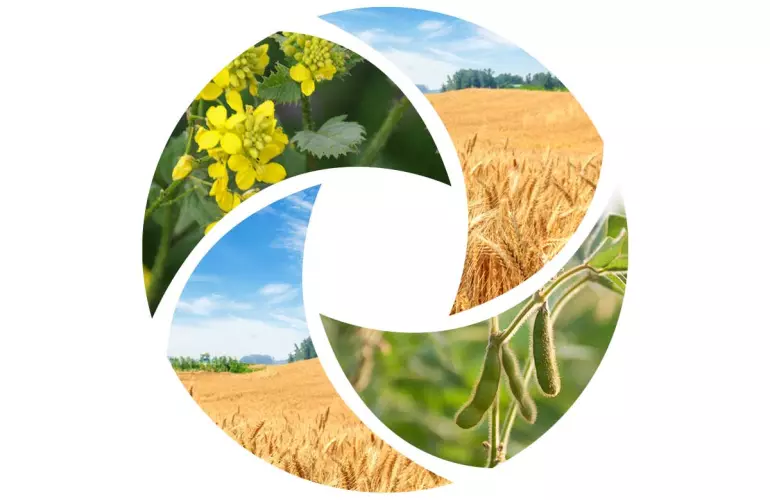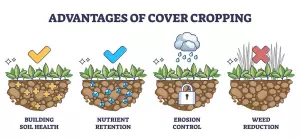
Everything you need to know about cover crops
Everything you need to know about cover crops and intercropping practices using cover crops, nitrate-fixing intermediate crops, and intermediate crops....
This is the period between harvesting a winter crop, usually before September, and sowing a spring crop the following year. The period extends over several months. It includes the autumn and winter periods, which are more conducive to certain climatic events that increase the risk of water pollution by nitrates. These periods are also a time when cover crops can be destroyed naturally. As such, shredding, mechanical action, or chemical action is not always required, frost may be sufficient to destroy some crops like phacelia, for example.
Growing maize several years in a row results in a long intercropping period. Fields are left uncultivated from November to at least March the following year. In some regions, harvesting can be very late at the end of the year, and without suitable sowing conditions (humidity, bearing capacity, etc.), it is impossible to plant an intermediate crop, despite there being a risk of nitrogen leaching. In such cases, legislation may recommend soil cover in the form of mulch. Mulch is created by finely shredding maize, sorghum or sunflower stalks, before burying the residues within a few days of harvest.
In the case of long intercropping, such as wheat-maize, soil cover is perfectly feasible with the many intermediate crops available after winter cereals. There are also alternative, less frequent, examples of long intercropping in our regions:
This is the period between harvesting a main winter crop and seeding a second winter crop. The period can extend from a few days to a few weeks, unlike long intercropping, which lasts for months. Often, the cover crop doesn’t have time to develop properly, especially if it has to be destroyed 1or 2 months before planting the next crop, due to herbicide or biofumigation residues (e.g. crucifers). The autumn period is therefore not really suitable for short intercropping, as it is the period most prone to the risk of pollution from nitrate leaching. Nevertheless, sowing a cover crop can be beneficial for the following crop, and may sometimes even be regulatory. Most short intercrops are planted between two winter cereals.
A typical example is rapeseed-wheat. Rapeseed is harvested between June and August, and wheat is sown in September-October. Cover crops can be planted during this 3-month period. In a rotation with rapeseed and wheat, it is easy to let the rapeseed seeds germinate after falling to the ground to create the cover crop.
For wheat on wheat, the intercropping period is also 2 to 3 months. Sowing a cover crop during this period can boost wheat yields. Trials have shown that cover crops consisting of legumes can increase yield by up to 6%, compared to 3% for crucifers, and almost nothing for grasses, but the cover crop must be sown as soon as possible after harvest. In addition, there is very little protection against take-all when crucifers are planted between two high-risk wheat crops.
There are many reasons for planting cover crops:
It is often difficult to manage the workload. You have just finished harvesting, and it's already time to start the next jobs. The next step is to seed the intercrop. Depending on the species, the type of mix and, above all, the seeds, their size and their requirements, different drilling methods may be necessary. Various techniques can be used, from broadcasting during stubble ploughing, to more precise drilling with a Min-till seed drill, or even a seeding combination. While weather conditions are relatively good in the summer, it is not the case in autumn with late seeding. Shortly after planting cover crops, it's time to sow the next crop in the rotation. The time and expense involved in destroying the cover crops mechanically (shredding, stubble cultivation, ploughing, etc.) or chemically, should be taken into account. Chemical destruction is not always authorized, so you need to refer to local regulations.
The choice depends on regulations, time, plants available, the purpose of the cover crop, and the botanical family. Generally speaking, earlier sowing with a high-biomass crop results in greater benefits. This is especially true of nitrate-fixing intermediate crops, as well as crops that release nitrogen into the soil after being destroyed.
In addition to nitrate-fixing species, the botanical family is also an important factor because if the species is from a different botanical family, it breaks the cycle of pests and diseases in the main crop. Some crop associations can be beneficial or harmful, and it is also important to take sowing date into account when choosing a cover crop. Some species are sensitive to certain climatic conditions, such as moha or nyger, that cannot be sown after a late harvest.

Everything you need to know about cover crops and intercropping practices using cover crops, nitrate-fixing intermediate crops, and intermediate crops....

Intercropping cover crops can serve a variety of purposes. It may meet regulatory requirements, improve agronomic potential, or increase intercropping production value. Sometimes, a few of these objec...

Intercropping must be managed as soon as possible after harvest. In fact, the choice of cropping method needs to be thought through beforehand. The species to include in the cover crop depends on this...


